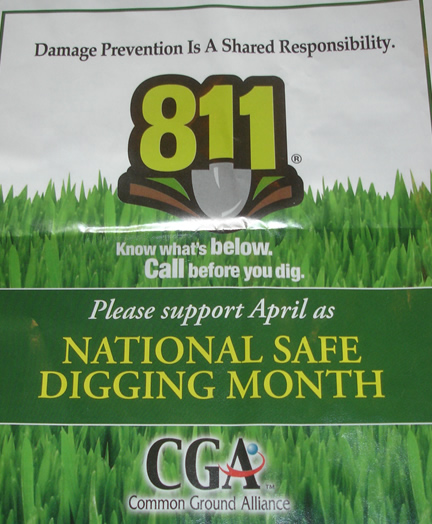In our landscaping business, we have always employed a four step process in preventing damage to underground lines.
1) Visually Survey the Site: There are simple things to look for yourself. The area between a meter and a structure is always an area of concern. Obvious replanting of grass seed might disclose where a line has recently been laid. Areas of greener grass might tell you where a water or sewer line resides.
2) Ask the Property Owner: Property owners are a source of line location information and might be able to tell you general areas of concern. However, their knowledge of buried lines should not be fully relied upon. Property owners “forget” locations of lines or are completely unaware of lines that were buried before they owned the property.
3) Call 811: A call to 811 a few days before your digging project will allow your local utilities to visit the site and mark your lines. This is a free service and should be used for every digging job. Even if the property owner tells you that an area is safe to dig, you should call 811 to prevent potential damage to “forgotten” lines. Also, calling 811 should help reduce your liability if you do damage an unmarked line.
4) Dig Carefully: After everyone (including 811) has asserted that there are no lines in a work area, landscapers should use due diligence in their digging practices. Keep watch for leaking water from a sewer or water line. Keep your nose alert for the smell from a gas line. Listen for unusual sounds indicating you are digging into something other than dirt.
Safe digging is no joke. I once had a competitor in the landscaping business who lost over $2,500 in repair costs and downtime when he inflicted minor damage to a sewer line during a small landscaping project. Simply following the 4 steps above would have saved him.
If you are thinking about starting a lawn care and landscaping business, visit our main website to read about our professionally produced Lawn Care Business Training Course. It is packed with information and business tools that will help you start (and expand) your own lawn care business.
Start A Lawn Care Business
http://www.StartALawnCareBusiness.com
